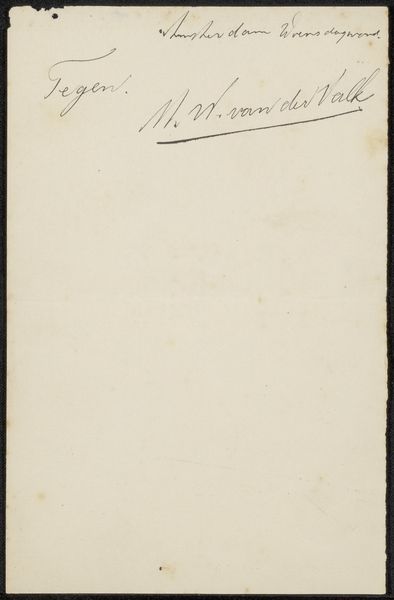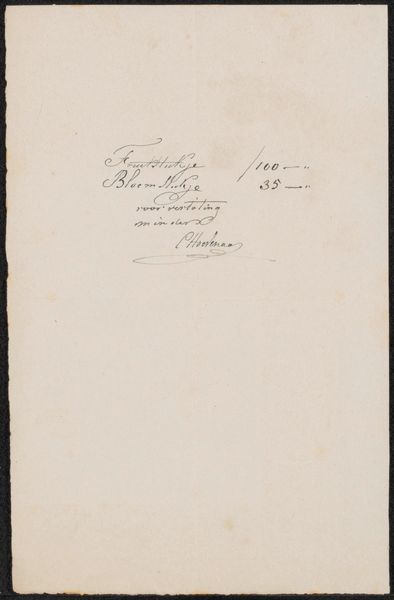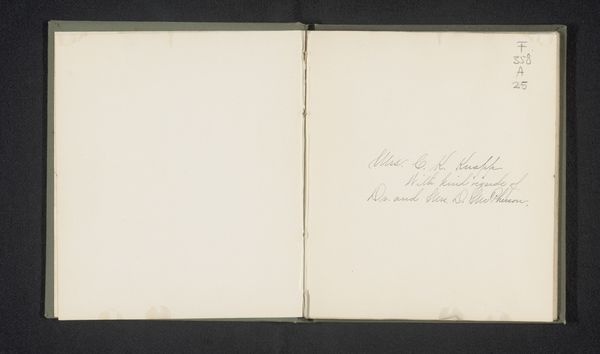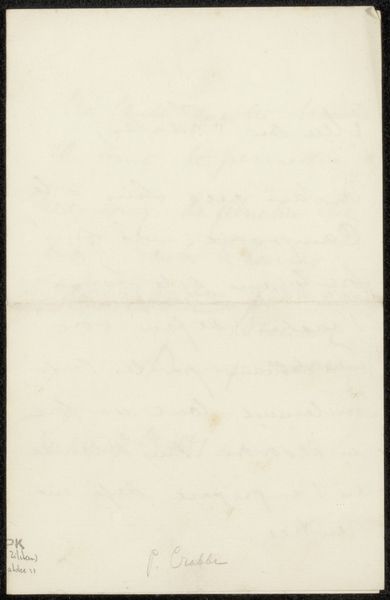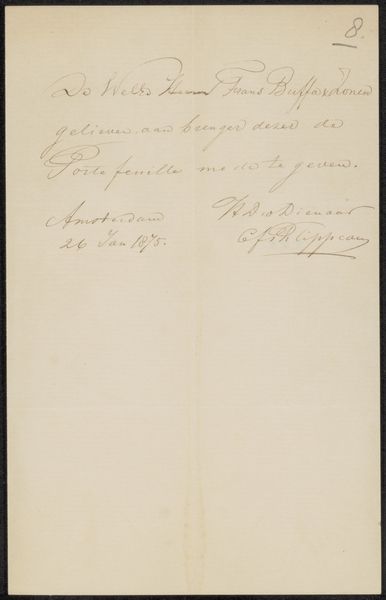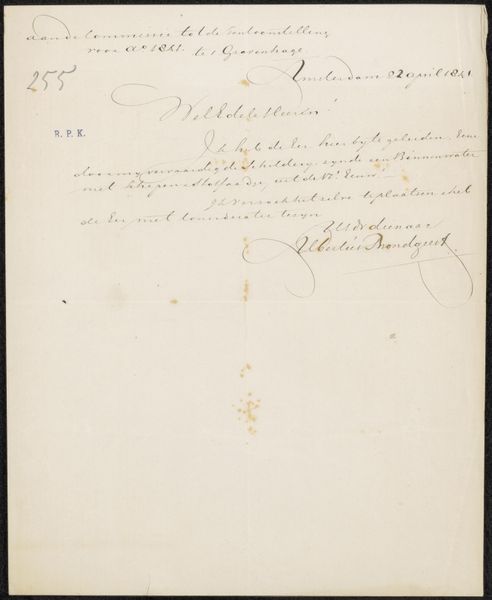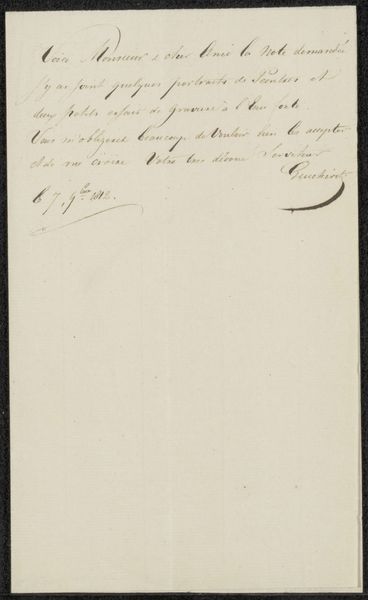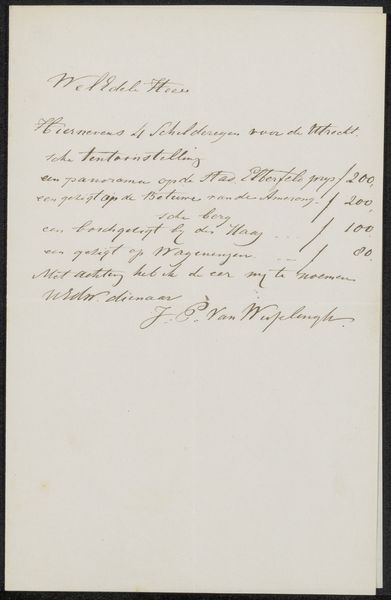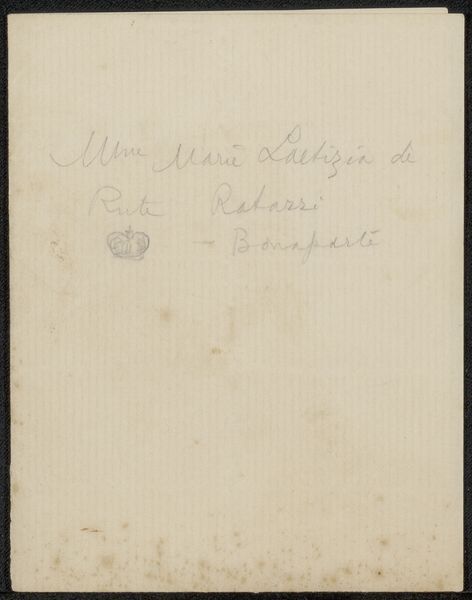
drawing, paper, ink, pen
#
drawing
#
blue ink drawing
#
paper
#
ink
#
pen-ink sketch
#
pen
#
academic-art
Copyright: Rijks Museum: Open Domain
Editor: Here we have "Signature of Frans Decker", dating from between 1824 and 1845, held here at the Rijksmuseum. It's ink on paper, and it strikes me as quite austere, even elegant in its simplicity. What do you see in this seemingly straightforward piece? Curator: I see far more than a mere signature. Look at the flourishes, the pressure applied to the pen. It’s the embodiment of a personality, an echo of societal conventions taking shape. It’s almost a relic. Do you sense the cultural weight carried by penmanship during that period? Editor: I hadn’t thought of it that way, but I suppose handwriting was a far more telling characteristic than it is today, wasn't it? More weight and artistry... Curator: Precisely. Think of signatures as emblems, symbolic of commitment and identity in a world increasingly shaped by bureaucracy. Can you trace the connection between this delicate script and its larger historical role in asserting presence and validation? Editor: I’m starting to. So the flourishes and the ink itself contribute to the identity being conveyed? It's more than just a name, then. Curator: Yes, it's an active demonstration. Every loop and curve carries a memory, whispering tales of social stature and individual expression. Consider how distinct the act of signing one's name was before mass printing and typewriters – how essential this 'Handtekening' was! Editor: Wow, I am looking at it very differently now! It’s no longer just a name, it’s almost a symbolic stand-in for the artist. Curator: Exactly! We started with what seems simple but by understanding the symbols and context of the piece we have opened it up for further interpretation!
Comments
No comments
Be the first to comment and join the conversation on the ultimate creative platform.
